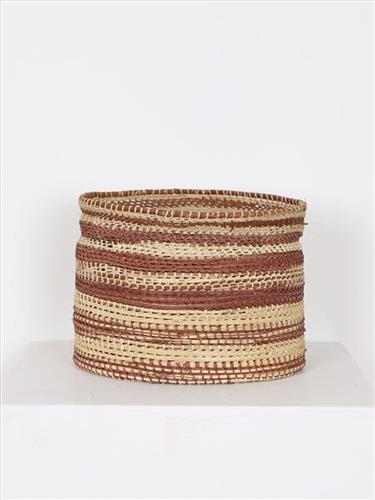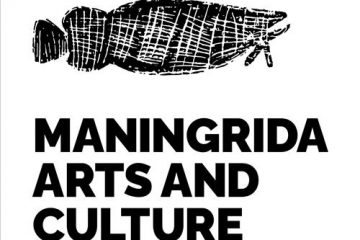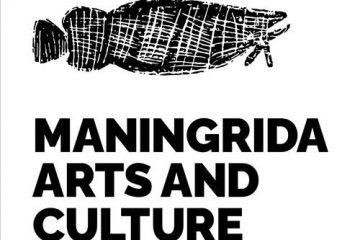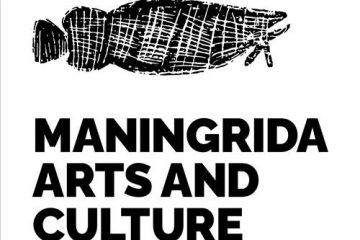Biography:
Alison Kuwanjguwanj learned to weave from her mother Frewa Bardaluna, a master fibre artist who had numerous exhibitions with leading Australian commercial galleries. Alison's work is distinguished by her soft tonal range, strong sense of design and intricate technique.
Alison predominately uses gun-menama (pandanus spiralis) it make woven panels, dilly bags and 2D sculptures of animals and yawkyawks (female water spirits). To prepare the pandanus the inner leaves of the plant are collected using a hook. Each V-shaped leaf is first split in half along its spine. After removing the sharp spines, the two surfaces of the leaf are then split away from other. After this preparation, the pandanus is boiled in a billycan with plant materials to dye the fibre. Like her contemporaries, Alison only uses natural dyes and achieves enormous variation. Common colours in her work include:
- barra gu-jirra: the soft, white and fleshy end of the pandanus leaf imparts green to the fibre.
- mun-gumurduk/ gala (Pogonolobus reticulatus): a bright yellow root that is crushed and put in a billycan with the fibre and boiled. It creates yellow when boiled once and deep orange hues when boiled multiple times.
- ngalpur (Haemodorum brevicaule): a bright red root which yields a range of purply red to brown colours.
- Baluk: ashes of certain plants are added to the boiling billycan with the fibre and dye plants to alter the colour that is imparted to the fibre. The fruiting body of gulpiny (Banksia denanta) is burnt and the ashes added to other day plants to make the colour pink.
(Margie West, 1995, Maningrida - the Language of Weaving)



